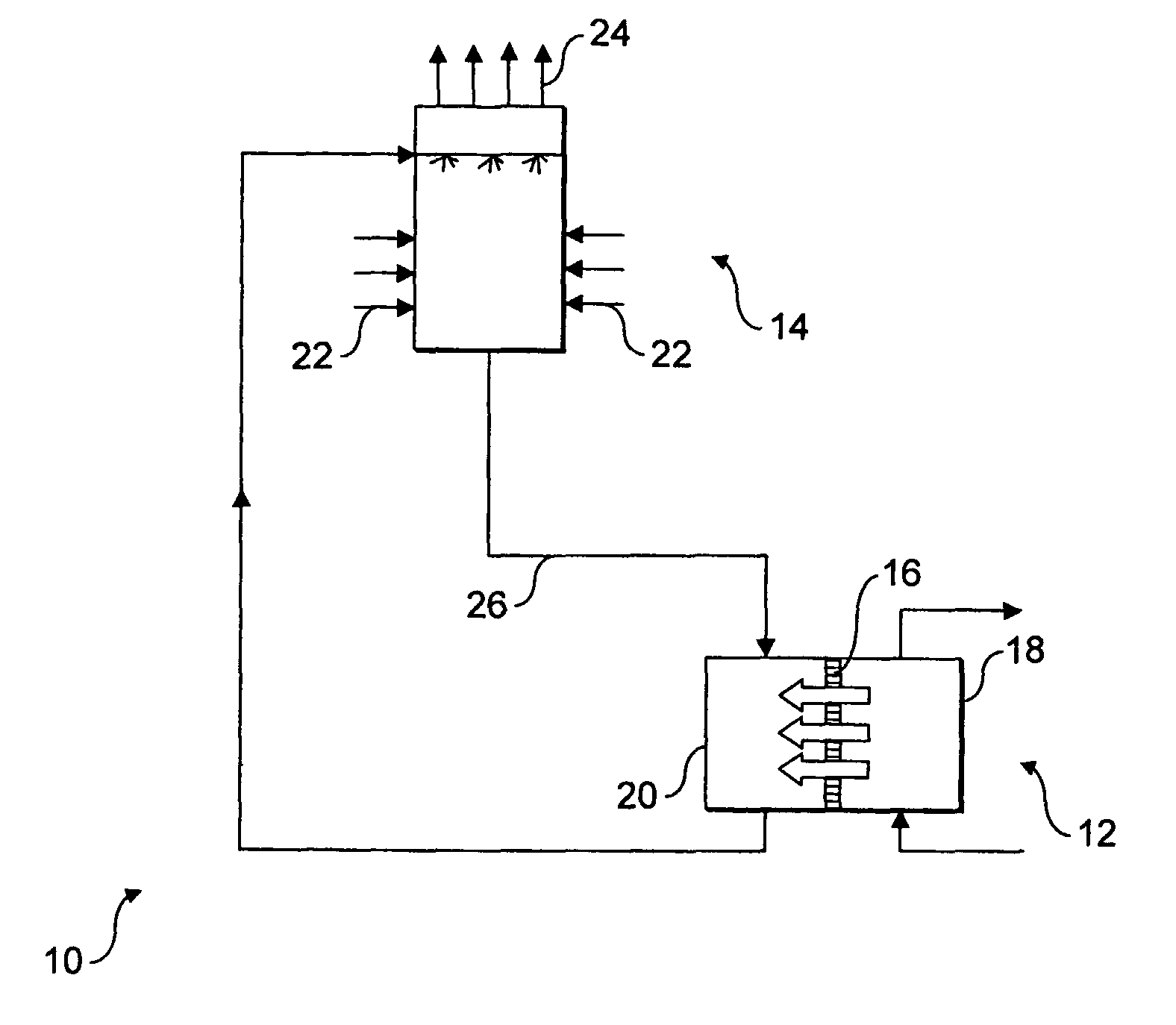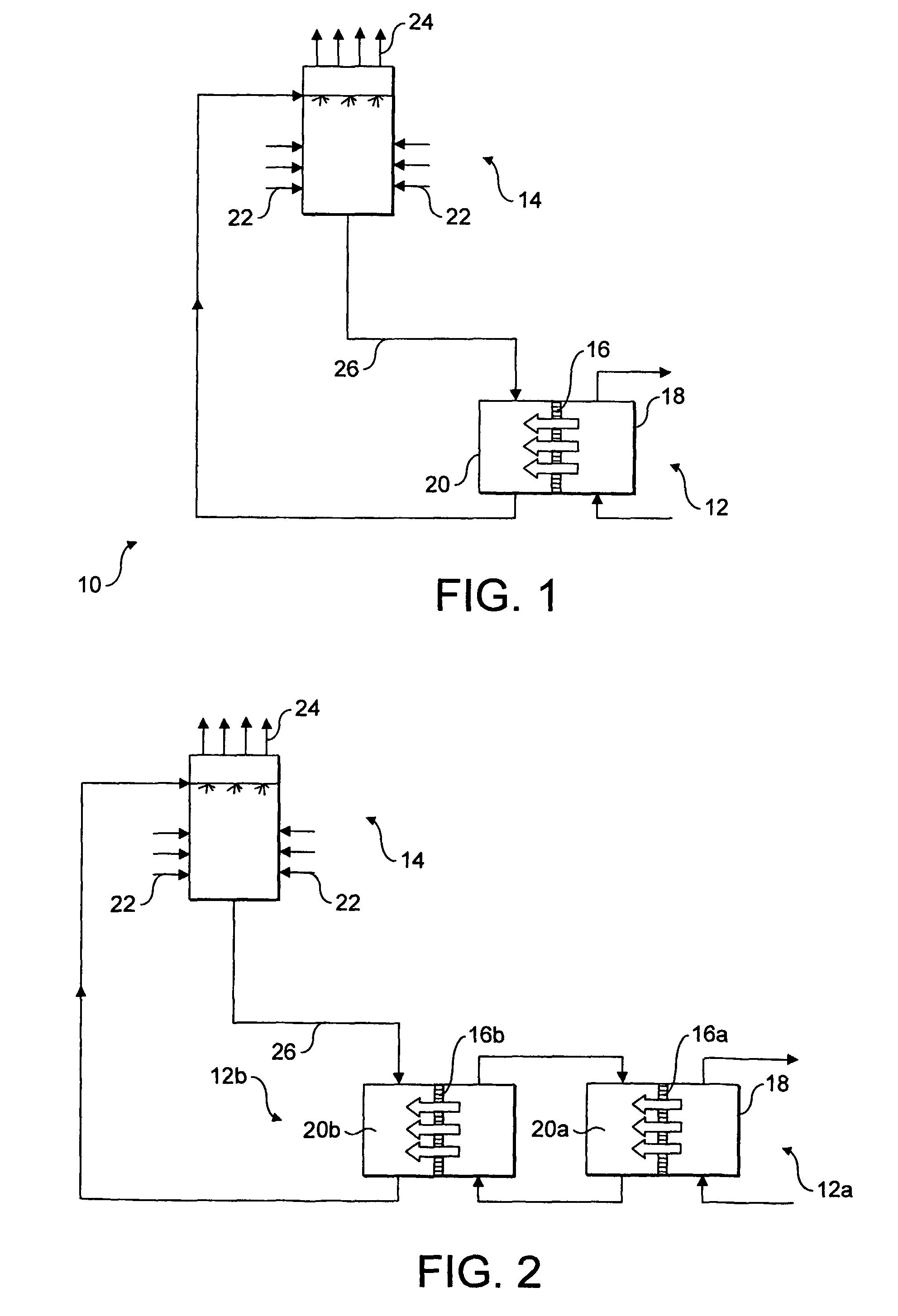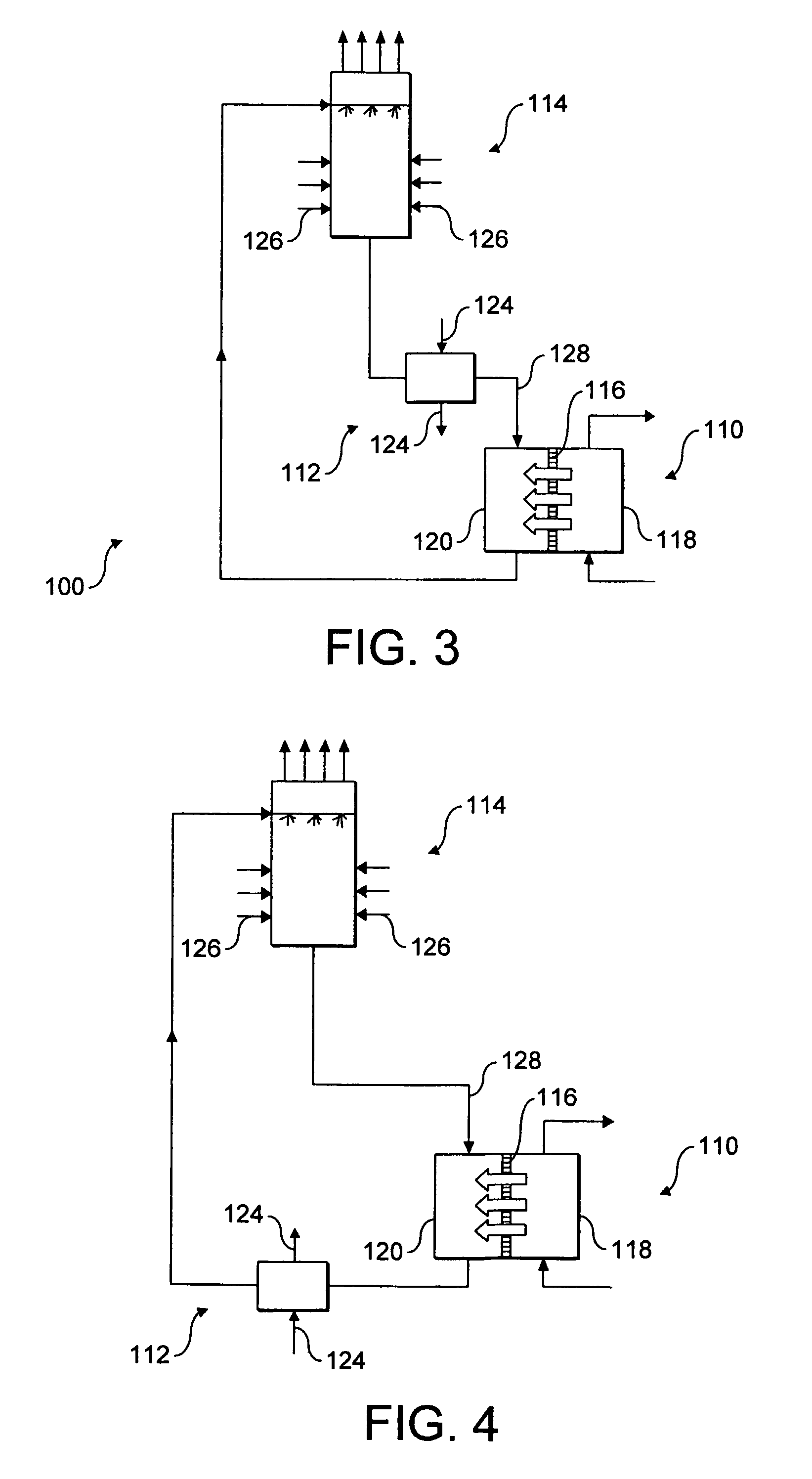Cooling apparatus
a technology of cooling apparatus and cooling water, which is applied in the direction of cooling apparatus, lighting and heating apparatus, defrosting, etc., can solve the problems of increasing the cost of the overall process, contaminating the overall process, and dissolved solids, etc., so as to improve the overall process heat transfer efficiency, reduce power consumption, and improve control
- Summary
- Abstract
- Description
- Claims
- Application Information
AI Technical Summary
Benefits of technology
Problems solved by technology
Method used
Image
Examples
Embodiment Construction
[0060]Referring to FIG. 1, there is provided an apparatus 10 for producing a cool stream of air.
[0061]The apparatus 10 comprises a housing 12 and an air cooler 14. The housing 12 comprises a selectively permeable membrane 16 for separating seawater 18 from a solution 20 formed by dissolving a known amount of sodium chloride in water.
[0062]In use, seawater 18 is circulated through the housing 12 on one side of the membrane 16, whilst sodium chloride solution 20 is circulated through the housing 12 on the opposite side of the membrane 16. The sodium chloride solution 20 in contact with the membrane 16 has a higher total dissolved salt (solute) concentration than the seawater 18. Thus, water flows from the seawater-side of the membrane 16 to the solution-side of the membrane 16 by osmosis.
[0063]The flow of water across the membrane 16 dilutes the sodium chloride solution 20. The diluted solution 20 is removed from the housing 12 and is introduced into the air cooler 14. The air cooler ...
PUM
 Login to View More
Login to View More Abstract
Description
Claims
Application Information
 Login to View More
Login to View More - R&D
- Intellectual Property
- Life Sciences
- Materials
- Tech Scout
- Unparalleled Data Quality
- Higher Quality Content
- 60% Fewer Hallucinations
Browse by: Latest US Patents, China's latest patents, Technical Efficacy Thesaurus, Application Domain, Technology Topic, Popular Technical Reports.
© 2025 PatSnap. All rights reserved.Legal|Privacy policy|Modern Slavery Act Transparency Statement|Sitemap|About US| Contact US: help@patsnap.com



